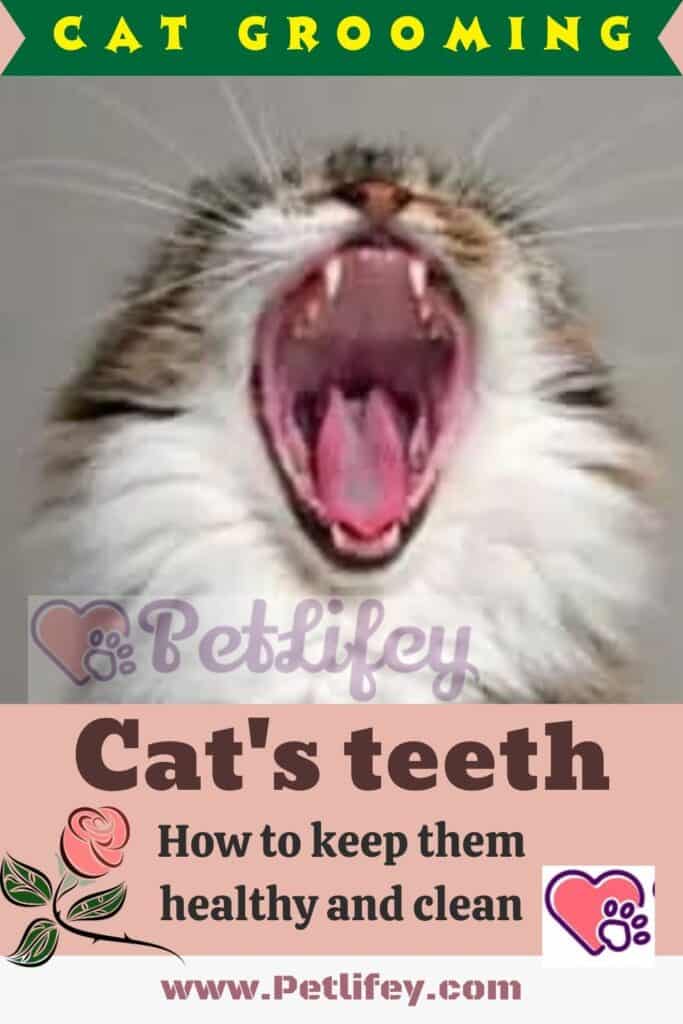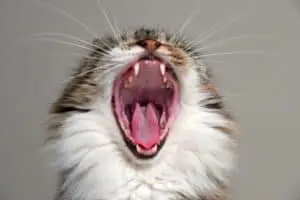
Are you attentive to your cat’s mouth? Here’s how to take care of your cat’s teeth in a practical and effective way, without irritating him.
Plaque, gum problems and tooth decay can plague your cat, but it could be hard to convince him to sit still to carry out a thorough and proper cleaning of the mouth. There are very useful and practical accessories on the market, but it is always advisable to consult the opinion of the veterinarian. There may be some initial difficulties, especially due to a certain resistance on the part of the cat: but don’t give up, because the results will be seen and it will be worth it!
Why clean your cat’s teeth
Dental cleaning is as important for cats as it is for humans: a healthy set of teeth avoids the risk of gingivitis, periodontitis and tartar problems. It is advisable to proceed with the cleaning operation at least twice a week, equipping yourself with ad hoc tools: in particular, there are small toothbrushes to put on your finger, with soft and rubbery bristles that do not scratch the gums of our feline friend. The tricky thing could be convincing the cat to endure this ‘torture’: just make him get used to it! Especially cats who are used to eating more wet food than dry they run the risk of tartar and plaque: foods of this type can settle on the teeth and stick to them, creating a favorable place for the formation of bacteria. This of course is also linked to bad breath problems which could be annoying not so much for the cat as for its owner. In this regard, it seems that catnip is very useful for refreshing our cat’s mouth!
The cat’s mouth
Have you ever counted the teeth inside the little feline mouth? As a puppy he has 24 milk teeth, while as an adult we count 30. They are all useful for the cat’s primary purpose which is to hunt: catch prey and eat it. In the standard set of teeth there are 4 sharp, long and rather pointed canines, 12 incisors, 8 premolars and 6 molars: their slight inward inclination allows the cat not to let the grip escape. The transition from milk to adult teeth is extremely important and it is recommended to have the mouth examined by the vet: if the adult teeth begin to come out before the milk teeth have not completely fallen out, there could be painful malformations.
The risks of an untreated mouth
A cat that does not have constant dental cleaning can be recognized immediately, as it has a rather heavy breath. But bad breath is not one of the main problems that can afflict our cat: in reality the biggest problem is represented by tartar, which is difficult to remove. In many cases our help is not enough: the veterinarian is needed who, with special tools, will be able to carry out a more thorough cleaning of the mouth. The surgery will have to be performed under anesthesia and will last from 20 to 30 minutes, during which it is necessary that the cat is still and relaxed to let the expert work at his best. Another problem is represented by gingivitis while caries are quite rare although not impossible.
Tartar in cats
When the plaque solidifies and settles on the tooth it becomes tartar: it is a transparent and sticky film that is created by the union of bacteria and the sugars of the remains of the food ingested by the cat. In this way the plaque adheres not only to the teeth but also to the gums, attacking not only the tooth enamel through acids and toxins, but also gum inflammation. The cat’s saliva should actually be a natural weapon against the erosive action of the acid, but it is often necessary to intervene with a toothbrush. If the tartar is not removed in time, caries could develop and at that point the vet will decide when and whether to extract the decayed tooth.
Gingivitis in cats
Gingivitis refers to inflammation of the feline’s gums. It is a deterioration of the gums that first causes discomfort and then real pain that prevents the cat from eating properly: in fact one of the alarm bells is the fact that the cat has difficulty chewing. If the feline begins to have no appetite, or to prefer liquid foods over solid ones, or an excessive increase in salivation, it is advisable to book a visit to the expert. Untreated gingivitis could easily cause teeth to fall out because it has affected their roots and ligaments.
The stages of gingivitis
In the first stage, the gums are swollen, red and may bleed profusely. In the second phase, pocket-like spaces are noted between the gum and the feline’s tooth: as the first retreats, the roots of the tooth will be more and more uncovered. In a third phase these same spaces could become infected, creating real abscesses, especially in contact with the moist food of his baby food. In the final phase of gingivitis, the damage will now be irreparable: the inflammation will have attacked the root and will lead to the loss of the tooth.
Cleaning the cat’s teeth: the right tools
The cat cleaning operation can be carried out by the expert and can cost up to 100 euros . It depends not only on the veterinarian’s fee, but also on how many operations he will have to carry out once he has anesthetized our cat. Unfortunately, anesthesia is a necessary phase as cleaning the cat’s teeth could be difficult and even risky as it would try to free itself from the grip. But if we want to proceed alone it is good to equip ourselves with some useful tools that will be easy to find on the market. One of these is certainly the dental snack which helps to remove food residues and traces of food between the teeth. There are also some special powders to mix with the baby food, which contain natural ingredients to whiten teeth and prevent bad breath. There are also gel or soft paste toothpastes that prevent the proliferation of bacteria and restore the balance of the mucous membranes. To this, of course, it will be necessary to associate a smaller toothbrush than the normal one and with very soft bristles. Finally, there are also special sprays to prevent the harmful action of plaque and fight bad breath.
Cleaning your cat’s teeth: the right moves

First of all it is good to get the cat used to the idea of finding our hands in the mouth: it could rightly be surprised and react violently to our unexpected ‘invasion’. Let’s try to do it gradually and without catching him off guard: let’s make him feel that our hands are not a threat. Maybe we can make them more ‘pleasant’ by dipping them in a can of tuna: the smell will conquer him. In the same box we could dip a gauze and then pass it over his teeth to let him fully savor the taste of the fish. Once his trust has been gained, we proceed to pass him the toothbrush, even better the one to wear on the finger, after having sprinkled it with toothpaste. Be careful not to use what we usually buy for us: xylitol and fluoride are harmful to our four-legged friends.
One last piece of advice
A little reflection deserves nutrition, which is the best weapon to prevent the onset of dental problems. Between dry and wet food, the former is by far preferable: in fact, croquettes help to keep the teeth clean because they do not settle on the tooth, but slide on its surface. Despite the choice of dry food, however, we will not be able to avoid dental cleaning: therefore even after the kibble gruel it will be necessary to use a toothbrush and toothpaste to combat the danger of plaque.






